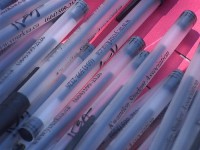Making Promotional Products Part of Your Marketing Mix

Promotional Products have a long history in advertising brands and services. Their effectiveness and relative simplicity make them a staple of marketing. Marketing studies show that they have one of the lowest cost per impression rates of any advertising method.
However, being so ubiquitous and inexpensive, promotional products are often used less effectively than they could be. Many businesses take an ad-hoc approach to promotional product campaigns, implementing them as an afterthought to supplement a separate campaign rather than integrating it from the beginning.
For many of the businesses that utilise promotional products there are a number of ways in which they could be using this form of advertising more efficiently.
Be Selective
It can be tempting to select a promotional product on the basis of cost or how quickly it can be turned out. However, it is important to think about what item will work best with your company’s ethos, branding, services or products.
Remember that the items you choose are representing your brand. Consider if they fit the tone and style of your branding and the message you want to send to your customers.
Make it Integral
A promotional product approach that does not compliment your overall marketing strategy is not as effective as it could be. Be sure to integrate promotional products in the development phase of a campaign rather than leaving them as an after thought.
Consider what type of promotions you expect to be doing and where you will have a physical presence. If sales personnel are visiting clients should they have promotional items with them? If so this needs to be prepared in advance.
If you will be promoting at trade fairs, consider what type of products will be most effective there. If you are about to release a new mobile application a promotional tablet cover or mobile holder might be more effective than a mug or a pen.
Schedule It
It is a good idea to have a particular time of year when you evaluate your promotional marketing strategy and budget for the forthcoming period. This way you can look at any upcoming events over the year that you will want to have promotional materials prepared for. You may even be able to get a deal from your supplier by ordering in a quieter period rather than just before a trade fair when everyone is putting in last minute orders.
You can then review the success of the campaign and determine how you will adjust your promotional product strategy year on year.
Measure your ROI
Like with any other marketing investment you should take steps to measure your ROI. However, unlike other forms of advertising such as on-line advertising it can be difficult to record conversions from promotional products.
QR codes, unique URLs and unique phone numbers are one way to determine effectiveness but these can be inconsistent. Follow-up questionnaires or emails can be an useful way of not only finding out the ROI of promotional products but also of sustaining contact with a customer or client.
Think Outside the Box
Some standards will always work such as your brand name on a pen. Everyone can use a pen. But there are more elaborate ways to not only promote your brand but associate your brand with positive ideas.
Reusable shopping bags are a great example of this. You don’t need to be a “Green” industry to support recycling or a cleaner environment. Using a green message rather than a corporate slogan also allows customers to look on you and your brand more favourably.
Consider what items will take your promotional product out of the office and into the customer’s day to day life, thereby increasing exposure and creating a favourable attitude towards the advertiser.
Promotional products are an inexpensive and straightforward advertising method that will be effective regardless of how your business uses them. But with intelligent and strategic application they can become may times more effective than they already are.
photo credit: steveleenow via photopin cc

